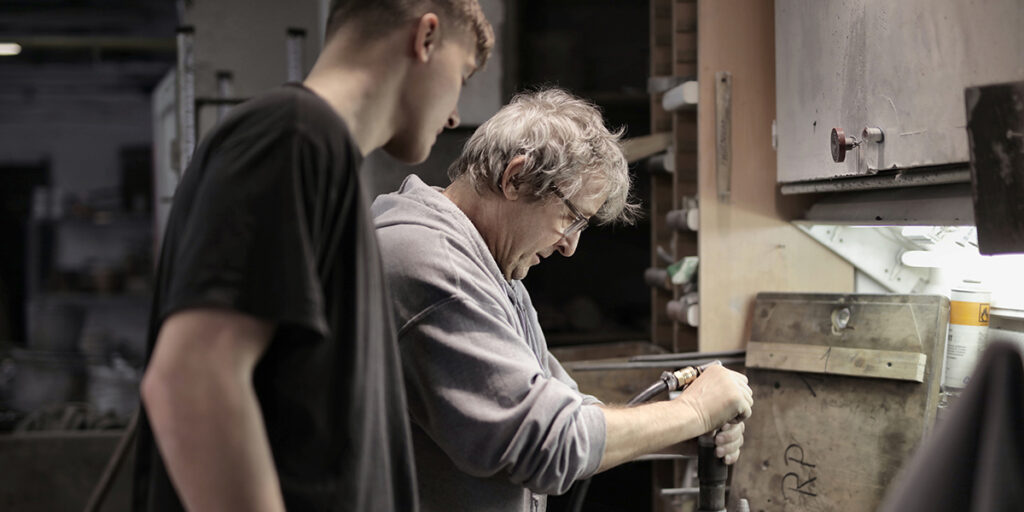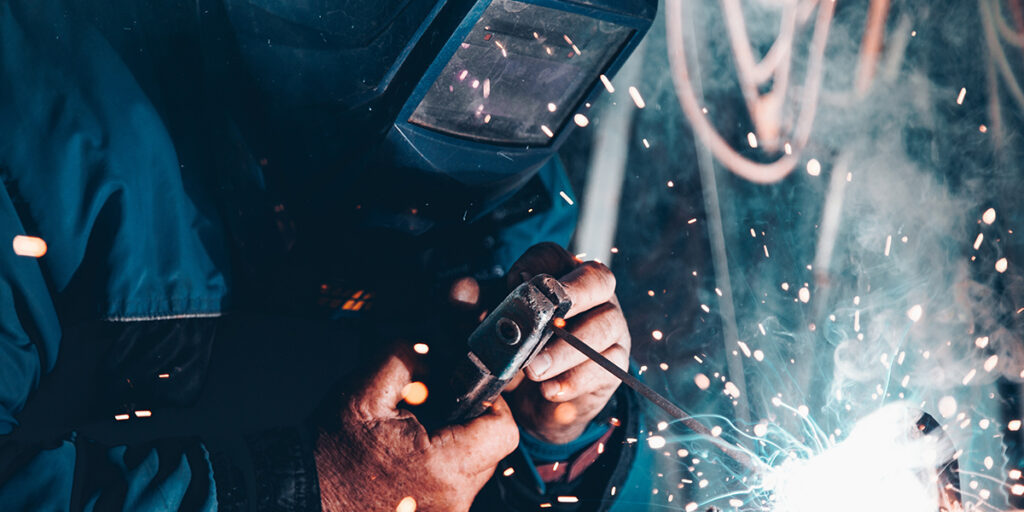Do you love Boats, building, and repairing? Are you handy with tools, interested in engineering, or looking to change careers altogether? Read on to find out how the Level 3 Boatbuilder apprenticeship could land you your dream job and kick-start a new career!
Key responsibilities of the Level 3 Boatbuilder Apprenticeship
What does a Boatbuilder Apprentice do?
A boatbuilder apprentice builds boats such as yachts, workboats, and superyachts and/or refit and repair existing boats. A variety of different materials such as composites, metals, or wood will be used. A boatbuilder apprentice will learn to work with and understand the capabilities of these materials.
You will learn to read and interpret engineering and technical drawings to produce molds, jigs, plugs, and templates during your boatbuilder apprenticeship. As an apprentice, you will learn to use these to create complex shapes using and variety of measuring equipment, machines, and hand tools. You will be expected to work individually and as part of a team.
You will manufacture and assemble components that form the structure of a boat as well as the interior and exterior as a boatbuilder. A understand and compliance with organisational and statutory safety including sustainability requirements is a must.
During your apprenticeship, you will be responsible for the quality and accuracy of your work. Apprentices should eventually be able to work with minimum supervision, therefore, you must be able to communicate and solve problems well.
During your boatbuilder apprenticeship, you will have the opportunity to work with associated trades such as Marine Engineers, as a result, you will gain a strong understanding of the marine industry.
Upon successful completion of the boatbuilder apprenticeship, you will be multi-skilled and capable of adapting to changing demands. Boats are becoming more complex, and new materials and methods are regularly being introduced. This means throughout your exciting career as a boatbuilder, you will be learning, adapting, and evolving.
This apprenticeship will be recognised by the Institute of Marine Engineering, Science and Technology (IMarEST) at ‘Engineering Technician’ level on successful completion.

Entry criteria for the Level 3 Boatbuilder Apprenticeship
Wondering how to become a boatbuilder?
Individual employers will identify any relevant entry requirements when applying for a boatbuilder apprenticeship. Most candidates will typically have GCSEs (or equivalent) at A*- C including maths, English, and possibly a relevant science.
If you’re applying for the boatbuilder apprenticeship without GCSE English and maths will need to achieve this level before taking the End-Point Assessment (EPA). Your apprenticeship provider will be able to assist you with this. Head over to ApprenticeNow.com to find out more about this.
For those with an education, health and care plan, or a legacy statement, the apprenticeship’s English and maths minimum requirement is Entry Level 3. A British Sign Language (BSL) qualification is an alternative to the English qualification for those whose primary language is BSL.

Level 3 Boatbuilder Apprenticeship Core Competencies
Behaviours – Level 3 Boatbuilder Apprenticeship
- Appropriate safety behaviours individually and towards others
- A commitment to quality and continuous improvement
- Commercial awareness and business acumen
- A focus on the requirements of the customer
- An ability to work effectively individually and as part of a team
- An ability to communicate with all levels of the organisation
- A strong work ethic including motivated, committed, meticulous, reliable, proactive, and adaptable behaviours
- A recognition and appreciation of equality and diversity in the workplace
Level 3 Boatbuilder Apprenticeship – Skills
Work method – Skills:
- Prepare the work area and maintain safe, clean, and efficient work methods and environments
- Identify and minimise hazards and risks in the workplace
- Select, use, maintain and store equipment, tools, and materials
- Follow and maintain work procedures, method statements, and production records
- Make the most efficient and effective use of resources, time, and materials
Identify and respond to customer needs – Skills:
- Prepare for meetings and discussions and use appropriate listening, questioning, recording, and presentation techniques
- Use appropriate marine terminology
- Use estimating techniques to support discussions
Planning and set up – skills:
- Review and verify designs and plans
- Finalise time and cost of the work to be done
- Identify and source equipment, machinery, tools, and materials
- Make, produce and use jigs and templates as required
- Set up tools and machinery
Manufacture and assemble/ disassemble and repair components – Skills:
- Manufacture or repair components to the required specification
- Move components using the appropriate safe methods
- Check components for robustness, fit, and tolerances
- Analyse problems with machinery, equipment,
- tools and material, proposing/implementing solutions where appropriate
- Move, shape, and manipulate components to achieve the best fit
- Select and use appropriate methods for holding materials and components in place, and for the connecting, fixing, and assembly of materials and components
- Safeguard materials and components during assembly
- Select suitable methods of repair that are effective and maintain original construction
- Select suitable methods for fault finding and analysis
- Make repairs whilst safeguarding the integrity of components and the surrounding area
- Identify, mark, store and organise dismantled parts for reassembly
Fit-out – skills:
- Determine the order and work methods
- Install and fix components using the most appropriate method and material
- Ensure that joins are suitably made and treated
- Position and fit items
- · Finalise fit-out for deck hardware
Finish – skills:
- Check joins are sealed and fit for purpose
- Prepare surfaces, treat suitably and ensure are free from defects and protected
- Soften or suitably finish edges
- Assess the quality of work
Support commissioning and sea trials – Skills:
- Assess fixtures and fittings for quality and stability
- Contribute to the commissioning of the boat as required
- Assemble required documentation
- Brief recipients verbally with the necessary documentation
Level 3 Boatbuilder Apprenticeship – Knowledge and understanding
Work methods – Knowledge and understanding:
- The purpose of a range of equipment, tools, and materials
- The characteristics and reaction of materials to their environment e.g. temperature, humidity, pressure
- Safe and efficient methods of use, maintenance, movement, protection, and storage of materials
- Work hazards and safe working methods
- Broad knowledge of other marine trades to understand their needs
- How to produce and interpret engineering drawings and understand boatbuilding terminology
Identify and respond to customer needs – Knowledge and understanding:
- The international marine industry and the company’s place within it
- The company’s products and services
- The role of formal and informal communication
- The uses of information technology in the workplace
- Principles of costing, pricing, and budgeting
Planning and set up – Knowledge and understanding:
- The company’s process for design, planning, and set up
- How to obtain the required specifications using selected procedures
- The conventions underpinning technical documentation the roles and safe and efficient uses of machinery
- The uses of templates
- Vessel design and construction, complex shapes, and the applications of geometry
- The bill of materials methodology and reporting of discrepancies
- Feedback on drawing and specification errors of modifications required
Manufacture and assemble/ disassemble and repair components – Knowledge and understanding:
- The appropriate uses of measuring aids and equipment
- The basic principles of contingency planning and of problem-solving
- The options and constraints during assembly
- Working with complex shapes and curves
- The scope of materials for shaping and manipulation
- Methods ptions for holding and clamping components before assembly
- The properties, uses, and limitations of materials for connecting, fixing, and assembling components
- De-storing a vessel for repair, safeguarding and protecting all removed items.
- Methods of disassembling boats for repair
- Fault finding techniques
- A range of new and traditional techniques for boatbuilding
Fit out – Knowledge and understanding:
- The options for connecting similar and dissimilar materials
- Types and uses of deck hardware and the forces applied
- The options for fixing components in place
- Understanding service and maintenance requirements
Finish – Knowledge and understanding:
- The options for connecting similar and dissimilar materials
- Types and uses of deck hardware and the forces applied
- The options for fixing components in place
- Understanding service and maintenance requirements
Support commissioning and sea trials – Knowledge and understanding:
- Manufacturers’ specifications and requirements
- Guidance for the care and maintenance of materials
- The relevant documentation
- Boat handling skills
- Understand the requirements for basin and sea trials
- Principles of practice for working on or near water
Conclusion
As you can see, the level 3 Boatbuilder apprenticeship is an exciting and excellent starting point for anyone looking to pursue a career in boatbuilding. The core skills, knowledge, and behaviours covered in this apprenticeship will open up a range of future opportunities for you.
With an apprenticeship you will earn while you learn, also your training is free to you, and there are plenty of opportunities for further education after completion. Why not take a look at our full list of approved Engineering & Manufacturing Apprenticeships here.

